#remember when paul acted like these photos had been lost for 60 years?
Explore tagged Tumblr posts
Photo
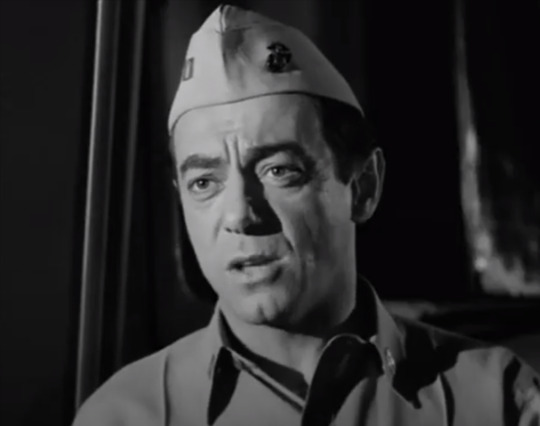
Two days ago, we discussed the sad story of Lt. D’Amato along with some interesting factoids. Now it’s time to learn about the actor who played him, Arthur Batanides. His interest in show business started during World War II when he would entertain his fellow soldiers with his comedy routines. Once the war was over, he began classes at the old Actor’s Studio. Before long, he was finding plenty of work in television and in film as a character actor. If you watch enough TV reruns from the 60s and 70s, you probably have seen Arthur Batanides in a small guest part. Trivia - During the late 1940s, Batanides shared a rented house with Fred Freiberger while they were both taking classes at the Actor’s Studio. It was Fred who hired his friend for the part of D’Amato in the third season of Star Trek. But Fred also helped him land a few roles in another show, The Wild, Wild West. (Freiberger wrote one of the episodes in which Arthur appeared - “The Night of fthe Dancing Death").
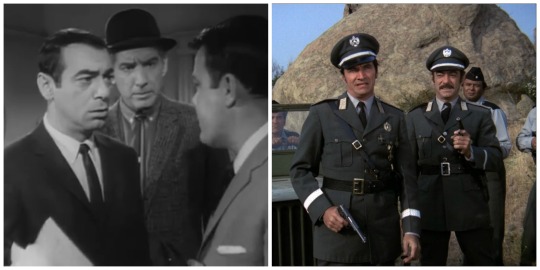
Arthur Batanides is mainly known for playing a heavy in movies and television. In the first photo on the left, he plays Clay Boudreau in an episode of 87th Precinct, one of three crooks who decide to hypnotize Greg Brovane into confessing to a robbery (and killings) he did not commit. In the middle of the group is another Star Trek guest star, Morgan Woodward. Mark Lenard (left) and Arthur Batanides (left) appear in the Mission Impossible episode “The Rebel.”
However, he first became known as an actor in a sci-fi series and went on to act in many other science fiction shows.
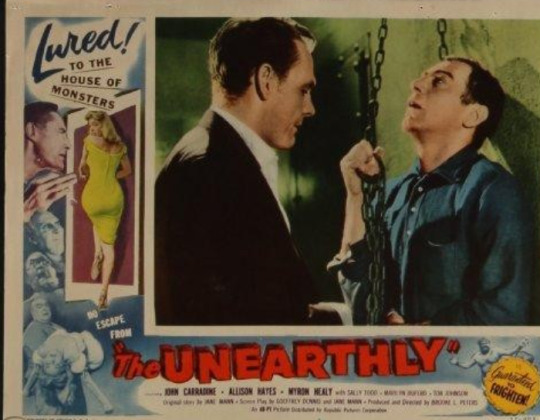
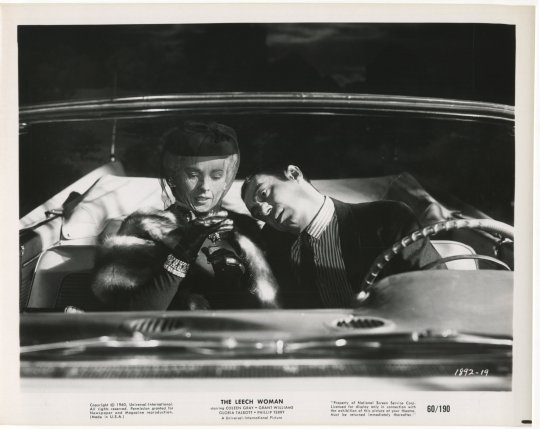
Art Batanides got his first acting start in the 1949-50 KTLA TV series The Armchair Detective. But his first semi-regular role was as a recurring villain in the sci fi television series Rod Brown of the Rocket Rangers. In an interview for Starlog 189, Batanides remembers being followed on the set by one of the extras who would drive him nuts practicing his comedy routines which often involved sound effects like that of a machine gun. It turned out to be comedian Jonathan Winters. He also did a few cheesy sci fi movies. In the first one titled The Unearthly (1957) he played a good guy trying to stop John Carradine’s evil plot. A few years later, Batanides appears as one of victims of June Talbor aka “The Leech Woman” in the movie of the same name. Both films have been lovingly reviewed in Mystery Science Theater 3000. The actor chuckled during his Starlog interview as he recalled how terrible these were, so bad that he and the other actors had to bite their lips.
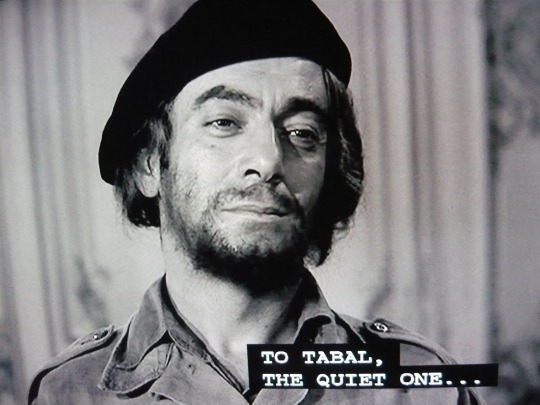
He was cast in two Twilight Zone episodes, “Mr. Denton on Doomsday” and “The Mirror.” In the latter episode, Peter Falk plays a Castro-like revolutionary named Ramos Clemente has a mirror that tells him which of his trusted supporters will attempt to assassinate him. One of his victims is played by Arthur Batanides and is named Tabal, ironically the leader of Clemente’s execution squad. Supposedly Tabal was based on real-life Che Guevera who had played a similar role in Castro’s rise to power.
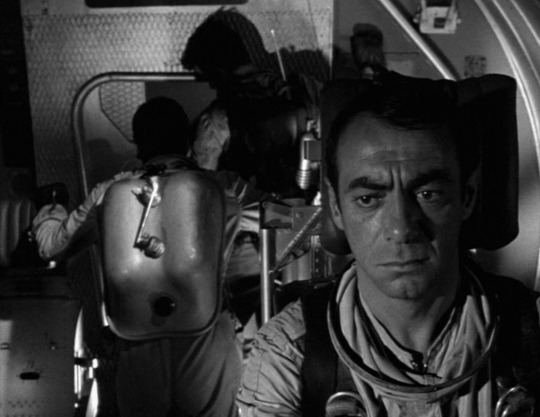
He played a character named Lt. Garvin, one of the astronauts in “Specimen: Unknown” for The Outer Limits along with two of his former acting school friends, Russell Johnson and Richard Jaeckel. The plot involved astronaut/researchers bringing back plants that they discover on the planet. Unknown to them, the plants soon begin to emit spores and then a deadly gas which threatens the crew. The spores allow them to multiply rapidly. Does this plot sound familiar to Trek fans? Hmmm..... There are several other Star Trek connections as well. 1) this episode was directed by Gerd Oswald who would go on to direct “The Alternative Factor” and “The Conscience of the King.” 2) Robert Justman was the assistant director on the set just as he was for the first two Star Trek pilots. He eventually wound up as the associate producer and then finally the co-producer. 3) Bob Johnson and Vic Perrin both did voice-overs for this episode and also provided the same on several episodes of Star Trek. Vic was most famous as the Control Voice which was heard at the beginning of every show. 4) Finally, Fred Phillips was the makeup supervisor for this episode and performed the same duty on all three seasons of Star Trek. “Specimen: Unknown” earned the highest ratings of the first season. But Batanides bemoaned the fact that the whole show had a low budget and that none of the astronaut suits matched. A complaint we Star Trek fans are familiar with.
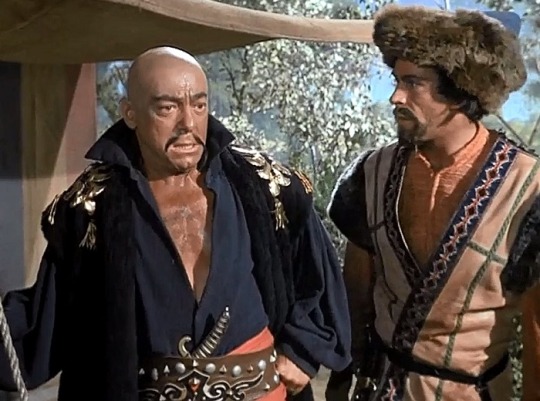
In The Time Tunnel’s episode titled “Attack of the Barbarians” Batanides was Batu Khan, Kubla Khan’s grandson. The actor has quite vivid memories of this character because he had to sit in the makeup chair for two hours and then they covered his head with a stretchy cloth so he appeared bald. But if you look at the results above, it appears the makeup artists did a wonderful job. Star Trek connections abound in this episode as well. Of course Lee Meriwether (Dr. Ann McGregor) would appear with him a few years later as Losira in “That Which Survives.” Another major character, Lt. General Haywood Kirk, was played by Whit Bissell, who also played the beleaguered station manager Lurry in “The Trouble with Tribbles.” There were also connections with two stunt people. Charlie Picerni was James Darren’s stunt double on the show itself (his brother Paul played a Mongol warrior in this episode). We saw him on Star Trek as a security guard in “Day of the Dove.” David Sharpe also performed stunts not only in this episode of The Time Tunnel, but he was also James Daly’s stunt double in “Requiem for Methusaleh” and was a stuntman in “Day of the Dove.”
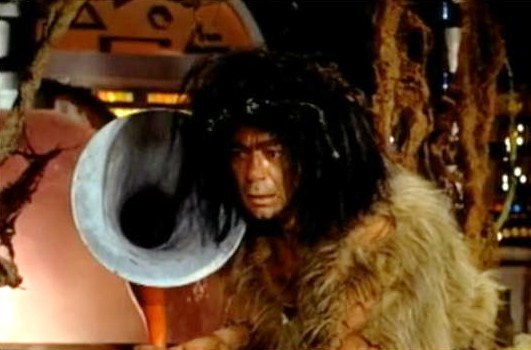
Batanides next appeared as a caveman leader named Rongah in “The Space Primevals,” a 1967 episode of Lost in Space. Art remembers having to wear the animal skin and wig and doing an impromptu caveman dance in one scene. Rongah and his people worship a giant computer named Protineus. The machine convinces the cave people that the humans are a danger to their people, ordering them to lock up Major West and Dr. Smith. It becomes clear that Protineus is acting much like Landru in “Return of the Archons.” There is even a scene where The Robot tries to confound Protineus by performing a series of magic tricks, much like Captain Kirk confounding computers in many episodes. Not many other Star Trek Connections here except for Sandy Gimpel (a Talosian in “The Cage”) as Will Robinson’s stunt double and Fred Steiner’s music.
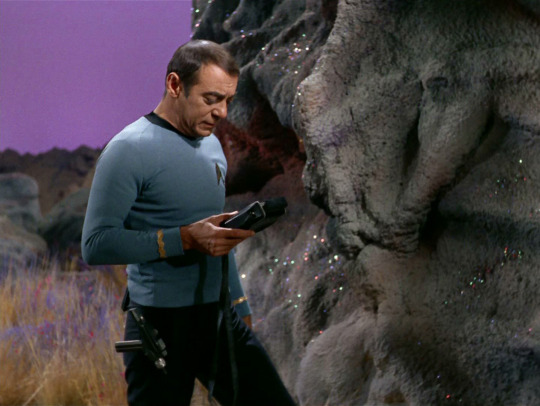
For the most part, Art was not too enthusiastic about taking roles in science fiction, despite the number of them in which he appeared. He was afraid it was going to wind up getting him typecast. When Freiberger offered him the part of D’Amato in “That Which Survives,” he was pleasantly surprised that his character was not the heavy nor did he have to do anything ridiculous like jump around the stage doing a caveman dance. D’Amato was pretty much a straight up role and Batanides enjoyed doing the show. Ironically, the role of D’Amato is one of the two roles for which he is most remembered. Asked what he remembered most about the episode, Batanides recalled they had the planet set on rollers to make it easier to simulate the earthquakes that rocked the planet. He was impressed with all the cast members, especially Leonard Nimoy. Trivia - During the late 1940s, Batanides shared a rented house with Fred Freiberger while they were both taking classes at the Actor’s Studio. It was Fred who hired his friend for the part of D’Amato in the third season of Star Trek. But Fred also helped him land a few roles in another show, The Wild, Wild West. (Freiberger wrote one of the episodes in which Arthur appeared - “The Night of the Dancing Death.”
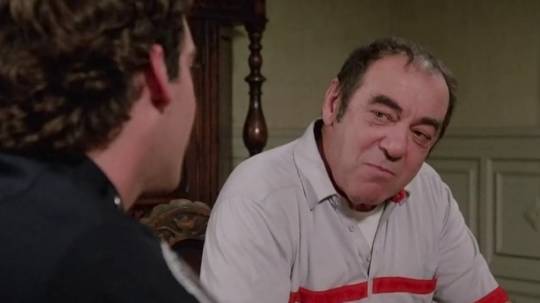
Freiberger was not the only influential friend he had. Over the years, Batanides had worked on many movie and television shows with director Jerry Paris, another friend of his from the Actor’s Lab. Jerry was made director of the first sequel to Police Academy. As he was looking over the script, he noticed a character who had been scratched out. However, he decided it was a great role and called Art to play Mr. Kirkland, father of the Kirkland family. Batanides today is still most often remembered for his role as Mr. Kirkland and as D’Amato. He retired after doing one last Police Academy movie (City Under Siege) and spent the last ten years of his life doing a few roles but mainly traveling various places with his wife. He died of natural causes in January of 2000.
9 notes
·
View notes
Link
For more that 200 years the town of Ebbw Vale, situated in an isolated valley in south Wales, owed its existence to the heavy industries of coal and iron that emerged there in the late 18th Century. But by the late 1990s a collapse of the international steel market led to eventual closure in 2002.
Photographer Joseph Murphy was on hand to document the last men to work at the plant, and to mark the 15th anniversary of its closure has spent the past year asking them to recall their time at the steelworks.
The resulting pictures can be seen at the National Waterfront Museum in Swansea until early April.
Alan John Harris
Electrical fitter and electrician, 34 years at the works
Image copyright Joseph Murphy
I suppose that it took a long time for it to sink in that it was actually going to close.
I loved every minute of every day at that plant.
I never imagined that the steelworks would ever close.
My thoughts were:
What were the people who worked there going to do?
What were my mates going to do?
What was I going to do?
Allan Watkins
Pickler team leader, 29 years at the works
Image copyright Joseph Murphy
The last shift I worked was the 06:00-14:00 shift on the day of closure itself.
I walked the complete area of the pickle line from the hot mill warehouse to the exit warehouse – just taking in as many memories as possible on the way.
I was gutted and hurt, but I knew deep down that we all had to pick ourselves up and move on.
Alun Hodson
Engineer on pickle line, 12 years at the works
Image copyright Joseph Murphy
I worked across all the shifts and encountered some unbelievable characters.
There was Arthur Jones, who would eat an onion like an apple, and his operator, Alan Holvey, who was completely deaf and dumb but who managed to get his message over sort of telepathically.
You had [another of my co-workers], who was so mean that it was said that he knocked the gas off to turn the bacon over and that he still had every free-issue donkey jacket and towel he had ever been given over his 30 years of service stuffed into his locker.
Alun Rees (left)
Team leader, warehouse and distribution, 32 years at the works
Image copyright Joseph Murphy
devastation
sad
end of an era
wanted to die
relieved (knew it was coming)
cheated
resigned to the fact
helpless
keen to move on
wanted to prove people wrong about the closure
cheated again and again
Colin Hazlewood
Team leader of 5-stand, 32 years at the works
Image copyright Joseph Murphy
I felt angry.
I felt frustrated because we were told that we were the best performing works with the highest quality.
I believe that a mixture of politics and location led to the downfall of Ebbw Vale.
Mike Gardner (front)
Team leader of electronic tinning line, 32 years at the works
Image copyright Joseph Murphy
My strongest memory of the plant is comradeship.
The experience of working in that environment will be with me forever.
You met people from different areas and different ways of life.
Some were strong characters, some were comedians, some were more serious, but when you put them all together you had a brilliant place to work.
To give an example, when I worked in the coal and coking plant you relied on your workmates to wash your backs in the showers – just as it was in the coal industry.
Ian Powell
Fitter turner, 39 years at the works
Image copyright Joseph Murphy
One of the proudest moments of Ebbw Vale has to be the last coil that was run through number three ETL.
It was a prime coil.
They should have made a film of the workers in the rundown to closure, to show people how a proud workforce acts in adversity.
It would have been so easy for them to say: “Why bother?” but they stayed proud of their work, and carried on regardless.
Lyndon T Crosby (left) and Steve Watkins (right)
Welder and maintenance electrician, 35 and 33 years at the works, respectively
Image copyright Joseph Murphy
Lyndon T Crosby: I was extremely apprehensive during the time of closure, but remember feeling fortunate.
Fortunate at having left school and starting work within a week, and lucky enough to be employed for 35 years, and leaving with a considerable lump sum and a small pension.
I was also fortunate enough to gain further employment, albeit with a great sadness, in the demolition of the works.
That time was tough emotionally.
Steve Watkins: The time of closure was upsetting.
There had been rumours flying around, so it wasn’t a complete surprise.
But I remember after the meeting at which it was announced, that I finished work early feeling sick and went home with a tear in my eye.
Philip Lawton
Fitter and roll grinder, 34 years at the works
Image copyright Joseph Murphy
The enormous size of the plant was locked into my memory when in my first year of employment I had to walk to work through the snow.
Walking through the various mills and departments along the vast length of the works was the easiest and quickest option.
The sounds and sights I experienced on that trek left a lasting impression on someone who had only just left school.
The constant noise from the tinplate lines, the smell of the acid being used to clean the steel coils in the pickler, the sight of a large hot steel ingot as bright as the Sun, being reduced to a thin steel slab, together with the bright light emanating from the converter shop, lingers in the mind.
Vincent Keane
Team leader of temper mill, 33 years at the works
Image copyright Joseph Murphy
I was actually in the works when I was told of the closure.
We were told to down tools and called in to be spoken to by senior management, who broke the news.
We were all numb really.
The last day was very muted, with little conversation.
I felt terrible.
Some people were taking photos at the gates, but most people clocked in, stayed for a couple of hours and then left quietly, alone with their thoughts.
Peter O’Callaghan
Fitter and roll grinder, 15 years at the works
Image copyright Joseph Murphy
At the time of closure I was 60 and would have liked to have had five more years to take me to retirement.
But I was devastated seeing young men with families losing their jobs.
My strongest memories are of my workmates.
We all had a good relationship with each other, so to recall the atmosphere at the time is emotional.
Paul Price
Production operator and team leader, 38 years at the works
Image copyright Joseph Murphy
I remember I was working a nightshift on the eve of the announcement.
We were all talking amongst ourselves about the outcome.
I remember saying to the boys that I thought they would put us on Monday-Friday working, rather than shut us down.
At the end of the shift, I went home to bed.
I got up at 13:00, and my partner was watching the Welsh news, and she said:”They are shutting the plant, with 18 months grace.”
I was absolutely devastated.
Mike Tarr
Projects engineer, 29 years at the works
Image copyright Joseph Murphy
My strongest memories are all my friends and work colleagues who I worked with during my 29 years service at the plant.
It’s difficult for many on the outside to understand the camaraderie that the steelworks had.
Only the coal industry could equal it.
We socialised together, our children and grandchildren played and went to school together.
Ever since the early 1800s, the works were part of the community, which our children have now lost.
Image copyright Joseph Murphy
Image copyright Joseph Murphy
All photographs by Joseph Murphy
Read more: http://ift.tt/2l2iEqK
The post The last shift at Ebbw Vale – BBC News appeared first on MavWrek Marketing by Jason
http://ift.tt/2jNhqhj
0 notes
Text
A Modest Proposal: Mr. President, Get Some Sleep
Donald Trump’s first week as president of the United States is in the bag, and what a week it’s been. He came in promising to be an unconventional president, and on that score he’s delivered. But in another sense, he’s off to an all too conventional start. Whether he recreates America’s greatness remains to be seen, but in the meantime, what he seems to be recreating is the chaotic Bill Clinton White House. Of course they’re miles apart politically. But what Trump is recreating is the Clinton working process — complete with all of its feverish, frantic, late-night, sleep-deprived chaos.
Let’s go back and look at the Clinton White House. Clinton came in bragging about his style of burning the candle at both ends and that’s exactly the M.O. he imported into the White House with—as we know—disastrous impulse control and decision-making consequences. “Perhaps because his father died before he was born, President Clinton was keenly aware of the fleeting nature of his time in office,” Paul Begala, one of Clinton’s advisors, said. “He seemed to believe that sleep was overrated.”
Whatever the origins, right from the beginning Clinton seemed to treat sleep as a political opponent to be resisted and defeated. In his book Eyewitness to Power, David Gergen, long-time advisor to several presidents, including Clinton, described those early days. “Clinton was still celebrating the victory and loved staying up half the night to laugh and talk with old friends,” Gergen wrote. “The next morning, he would be up at the crack of dawn to hit the beach for an early run or perhaps a game of touch football.”
This style of working was not without consequences. “He seemed worn out, puffy, and hyper,” Gergen wrote. “His attention span was so brief that it was difficult to have a serious conversation of more than a few minutes.” At one point, Gergen tried to give the president some gentle advice — which was, after all, what he was hired to do. “In a short encounter with Clinton, I tried to say gently that the presidency is a marathon, not a hundred-yard dash, and I hoped he would have a chance for some downtime in the three weeks still remaining,” Gergen wrote. “I don’t think I registered. . . . Those who saw him in his first weeks at the White House often found him out of sorts, easily distracted, and impatient.” Sound eerily recently familiar?
Of course it went way beyond the first few weeks. And it also had a spillover effect, because when the president doesn’t sleep, neither does anybody else around the president. “My wife and I, we had the official phone right next to our bed,” Bill Richardson, Clinton’s energy secretary and former governor of New Mexico, said. “And whenever it was after 1 a.m., it was President Clinton. And he did it quite frequently.” Not surprisingly, it even became an issue with Richardson’s wife. “I remember some of those late phone calls my wife would turn over in bed and say ‘Oh my God,’” said Richardson. “We put the phone in another room and I’d lock the door so she wouldn’t hear.”
And despite its considerable downsides, this way of working never really changed. As Health and Human Services Secretary Donna Shalala said, by the end of the eight years, with the soon-to-depart President Clinton frantically eager to address overlooked policy proposals, she began sleeping with her massive briefing books right next to her bed, ready for the inevitable late night calls. “I was numb the last two weeks,” Shalala said.
How big of an effect did this have on Clinton’s presidency? His first week was dominated by his clumsy handling of the gays-in-the-military issue, which earned him criticism from those on both sides of the aisle. And according to Gergen, this way of working “planted seeds that almost destroyed Clinton’s presidency.” Bill Clinton himself later acknowledged “every important mistake I’ve made in my life, I’ve made because I was too tired.”
And Hillary Clinton might make the same admission one day, given that it was on the same night that she refused to rest after having been diagnosed with walking pneumonia that she made one of her worst mistakes of the campaign — calling Trump supporters a “basket of deplorables.”
And now let’s look at Trump’s first week. Here’s a handy summary of it — in a series of nine tweets — by The New York Times’ Maggie Haberman:
A few final thoughts on the weekend/first few days. Trump had less than 4 hours sleep on Saturday, when he woke up and, at about 7 am., 1/
— Maggie Haberman (@maggieNYT) January 25, 2017
... started calling advisers and aides angry about the @BCAppelbaum RT by parks, accusing media of being out to get him. Trump's worst 2/
— Maggie Haberman (@maggieNYT) January 25, 2017
...impulse control is when he's tired or overstretched, or in an uncertain situation. All three took place Saturday. Trump is unable 3/
— Maggie Haberman (@maggieNYT) January 25, 2017
...to let go of any grievance or perceived slight. And he is genuinely transfixed by people thinking his election isn't legit. He is 4/
— Maggie Haberman (@maggieNYT) January 25, 2017
...as his advisers say often, at his most self-destructive when the stakes are high (see post-primary, post-convention, debates) and 5/
— Maggie Haberman (@maggieNYT) January 25, 2017
...has historically been the one who most undercuts himself. He is also driven by desire to be treated seriously/with respect. For the WH 6/
— Maggie Haberman (@maggieNYT) January 25, 2017
...the idea was that people would be around him who knew him or knew DC or could calm him. The more time ppl spend w Trump, the more they 7/
— Maggie Haberman (@maggieNYT) January 25, 2017
...tend to adopt his mindset about how he is treated. Not all aides thought Spicer jeremiad was a bad idea. But all shared view POTUS 8/
— Maggie Haberman (@maggieNYT) January 25, 2017
...was being treated poorly. by press. None could get him to move past the feeling of injury, to focus on the enormity at hand. 9/9
— Maggie Haberman (@maggieNYT) January 25, 2017
And perhaps the reason the aides “tend to adopt his mindset” is because they’re also forced to adopt his sleeping habits.
And now we’ve learned that on his first morning as president of the United States, Trump personally called acting National Park Service director Michael T. Reynolds and ordered him to come up with photos of the inauguration crowd that would counter the media’s reporting that the size of the crowd had been smaller than that of President Obama’s. Asked about the call, deputy White House press secretary Sarah Huckabee Sanders said it is just the result of President Trump’s style of being “so accessible, and constantly in touch.”
In fact, the decision to make that call, and bizarrely keep the issue going for the entire first week of his presidency, seems to be more the result of President Trump being almost constantly awake with his executive functioning impaired. (Highly recommended that the White House staff, if not the president himself, read the McKinsey study on the impact of sleep deprivation, excerpted in the Harvard Business Review).
And by the end of the week, he was still up at all hours, tweeting and intensifying his feud with Mexico at 5:51 a.m.:
The U.S. has a 60 billion dollar trade deficit with Mexico. It has been a one-sided deal from the beginning of NAFTA with massive numbers...
— Donald J. Trump (@realDonaldTrump) January 26, 2017
of jobs and companies lost. If Mexico is unwilling to pay for the badly needed wall, then it would be better to cancel the upcoming meeting.
— Donald J. Trump (@realDonaldTrump) January 26, 2017
It’s not much of a surprise, given that Trump has long regarded sleep as just another adversary to be dominated into submission. “You know, I’m not a big sleeper,” he said during a campaign rally in Illinois. “I like three hours, four hours. I toss, I turn, I beep-de-beep, I want to find out what’s going on.”
And many of his campaign’s most divisive moments came in the middle of the night or early morning. The attack on Megyn Kelly? 3:53 a.m.
I really enjoyed the debate tonight even though the @FoxNews trio, especially @megynkelly, was not very good or professional!
— Donald J. Trump (@realDonaldTrump) August 7, 2015
The attack on Alicia Machado? 5:30 a.m.
Did Crooked Hillary help disgusting (check out sex tape and past) Alicia M become a U.S. citizen so she could use her in the debate?
— Donald J. Trump (@realDonaldTrump) September 30, 2016
So in effect he told us he wasn’t going to be sleeping much, and he’s keeping that promise. But this is one of the many promises he should consider breaking. The science and data on sleep are as clear as the photos of inaugural crowds. And ignoring the former might account for his irrational beliefs about the latter. There are, of course, thousands of studies on this, but to cite just one, here are the results from a study on the effects of sleep deprivation from the Walter Reed hospital:
RESULTS: Relative to baseline, sleep deprivation was associated with lower scores on Total EQ (decreased global emotional intelligence), Intrapersonal functioning (reduced self-regard, assertiveness, sense of independence, and self-actualization), Interpersonal functioning (reduced empathy toward others and quality of interpersonal relationships), Stress Management skills (reduced impulse control and difficulty with delay of gratification), and Behavioral Coping (reduced positive thinking and action orientation). Esoteric Thinking (greater reliance on formal superstitions and magical thinking processes) was increased.
It’s like a summary of President Trump’s first week. Just look at what happened on day three. According to The New York Times, Trump opened his meeting with House and Senate leaders on Monday by restating his claim that 3 to 5 million “illegals” had voted in the election, denying him his rightful victory in the popular vote. He backed this up with a strange taleabout former professional golfer Bernhard Langer. In Trump’s telling, Langer, a German native living in Florida, was denied the right to vote at his polling place, even though others in line, who looked to be from Latin America, were allowed to cast provisional ballots. But according to Langer’s daughter, her father couldn’t have voted anyway. “He is a citizen of Germany,” she said. “He is not a friend of President Trump’s, and I don’t know why he would talk about him.”
And now the president says he’ll soon sign an order for a full-fledged investigation of these supposed 3 to 5 million votes.
Esoteric thinking, formal superstitions, magical thinking — not exactly traits you want in a president. And whether you voted for him or not, it’s now in everybody’s interest — it’s in our national security’s interest — that he begins to charge his phone in another room and gets a good night’s sleep. We of course have no control over the president’s sleeping habits, but we do have control over our own. And as we’re headed into a very bumpy week two and beyond, we need all the calm, clear-headedness, and resilience we can muster.
-- This feed and its contents are the property of The Huffington Post, and use is subject to our terms. It may be used for personal consumption, but may not be distributed on a website.
from http://ift.tt/2jB3fz2 from Blogger http://ift.tt/2kEUMs7
0 notes
Text
A Modest Proposal: Mr. President, Get Some Sleep
Donald Trump’s first week as president of the United States is in the bag, and what a week it’s been. He came in promising to be an unconventional president, and on that score he’s delivered. But in another sense, he’s off to an all too conventional start. Whether he recreates America’s greatness remains to be seen, but in the meantime, what he seems to be recreating is the chaotic Bill Clinton White House. Of course they’re miles apart politically. But what Trump is recreating is the Clinton working process — complete with all of its feverish, frantic, late-night, sleep-deprived chaos.
Let’s go back and look at the Clinton White House. Clinton came in bragging about his style of burning the candle at both ends and that’s exactly the M.O. he imported into the White House with—as we know—disastrous impulse control and decision-making consequences. “Perhaps because his father died before he was born, President Clinton was keenly aware of the fleeting nature of his time in office,” Paul Begala, one of Clinton’s advisors, said. “He seemed to believe that sleep was overrated.”
Whatever the origins, right from the beginning Clinton seemed to treat sleep as a political opponent to be resisted and defeated. In his book Eyewitness to Power, David Gergen, long-time advisor to several presidents, including Clinton, described those early days. “Clinton was still celebrating the victory and loved staying up half the night to laugh and talk with old friends,” Gergen wrote. “The next morning, he would be up at the crack of dawn to hit the beach for an early run or perhaps a game of touch football.”
This style of working was not without consequences. “He seemed worn out, puffy, and hyper,” Gergen wrote. “His attention span was so brief that it was difficult to have a serious conversation of more than a few minutes.” At one point, Gergen tried to give the president some gentle advice — which was, after all, what he was hired to do. “In a short encounter with Clinton, I tried to say gently that the presidency is a marathon, not a hundred-yard dash, and I hoped he would have a chance for some downtime in the three weeks still remaining,” Gergen wrote. “I don’t think I registered. . . . Those who saw him in his first weeks at the White House often found him out of sorts, easily distracted, and impatient.” Sound eerily recently familiar?
Of course it went way beyond the first few weeks. And it also had a spillover effect, because when the president doesn’t sleep, neither does anybody else around the president. “My wife and I, we had the official phone right next to our bed,” Bill Richardson, Clinton’s energy secretary and former governor of New Mexico, said. “And whenever it was after 1 a.m., it was President Clinton. And he did it quite frequently.” Not surprisingly, it even became an issue with Richardson’s wife. “I remember some of those late phone calls my wife would turn over in bed and say ‘Oh my God,’” said Richardson. “We put the phone in another room and I’d lock the door so she wouldn’t hear.”
And despite its considerable downsides, this way of working never really changed. As Health and Human Services Secretary Donna Shalala said, by the end of the eight years, with the soon-to-depart President Clinton frantically eager to address overlooked policy proposals, she began sleeping with her massive briefing books right next to her bed, ready for the inevitable late night calls. “I was numb the last two weeks,” Shalala said.
How big of an effect did this have on Clinton’s presidency? His first week was dominated by his clumsy handling of the gays-in-the-military issue, which earned him criticism from those on both sides of the aisle. And according to Gergen, this way of working “planted seeds that almost destroyed Clinton’s presidency.” Bill Clinton himself later acknowledged “every important mistake I’ve made in my life, I’ve made because I was too tired.”
And Hillary Clinton might make the same admission one day, given that it was on the same night that she refused to rest after having been diagnosed with walking pneumonia that she made one of her worst mistakes of the campaign — calling Trump supporters a “basket of deplorables.”
And now let’s look at Trump’s first week. Here’s a handy summary of it — in a series of nine tweets — by The New York Times’ Maggie Haberman:
A few final thoughts on the weekend/first few days. Trump had less than 4 hours sleep on Saturday, when he woke up and, at about 7 am., 1/
— Maggie Haberman (@maggieNYT) January 25, 2017
... started calling advisers and aides angry about the @BCAppelbaum RT by parks, accusing media of being out to get him. Trump's worst 2/
— Maggie Haberman (@maggieNYT) January 25, 2017
...impulse control is when he's tired or overstretched, or in an uncertain situation. All three took place Saturday. Trump is unable 3/
— Maggie Haberman (@maggieNYT) January 25, 2017
...to let go of any grievance or perceived slight. And he is genuinely transfixed by people thinking his election isn't legit. He is 4/
— Maggie Haberman (@maggieNYT) January 25, 2017
...as his advisers say often, at his most self-destructive when the stakes are high (see post-primary, post-convention, debates) and 5/
— Maggie Haberman (@maggieNYT) January 25, 2017
...has historically been the one who most undercuts himself. He is also driven by desire to be treated seriously/with respect. For the WH 6/
— Maggie Haberman (@maggieNYT) January 25, 2017
...the idea was that people would be around him who knew him or knew DC or could calm him. The more time ppl spend w Trump, the more they 7/
— Maggie Haberman (@maggieNYT) January 25, 2017
...tend to adopt his mindset about how he is treated. Not all aides thought Spicer jeremiad was a bad idea. But all shared view POTUS 8/
— Maggie Haberman (@maggieNYT) January 25, 2017
...was being treated poorly. by press. None could get him to move past the feeling of injury, to focus on the enormity at hand. 9/9
— Maggie Haberman (@maggieNYT) January 25, 2017
And perhaps the reason the aides “tend to adopt his mindset” is because they’re also forced to adopt his sleeping habits.
And now we’ve learned that on his first morning as president of the United States, Trump personally called acting National Park Service director Michael T. Reynolds and ordered him to come up with photos of the inauguration crowd that would counter the media’s reporting that the size of the crowd had been smaller than that of President Obama’s. Asked about the call, deputy White House press secretary Sarah Huckabee Sanders said it is just the result of President Trump’s style of being “so accessible, and constantly in touch.”
In fact, the decision to make that call, and bizarrely keep the issue going for the entire first week of his presidency, seems to be more the result of President Trump being almost constantly awake with his executive functioning impaired. (Highly recommended that the White House staff, if not the president himself, read the McKinsey study on the impact of sleep deprivation, excerpted in the Harvard Business Review).
And by the end of the week, he was still up at all hours, tweeting and intensifying his feud with Mexico at 5:51 a.m.:
The U.S. has a 60 billion dollar trade deficit with Mexico. It has been a one-sided deal from the beginning of NAFTA with massive numbers...
— Donald J. Trump (@realDonaldTrump) January 26, 2017
of jobs and companies lost. If Mexico is unwilling to pay for the badly needed wall, then it would be better to cancel the upcoming meeting.
— Donald J. Trump (@realDonaldTrump) January 26, 2017
It’s not much of a surprise, given that Trump has long regarded sleep as just another adversary to be dominated into submission. “You know, I’m not a big sleeper,” he said during a campaign rally in Illinois. “I like three hours, four hours. I toss, I turn, I beep-de-beep, I want to find out what’s going on.”
And many of his campaign’s most divisive moments came in the middle of the night or early morning. The attack on Megyn Kelly? 3:53 a.m.
I really enjoyed the debate tonight even though the @FoxNews trio, especially @megynkelly, was not very good or professional!
— Donald J. Trump (@realDonaldTrump) August 7, 2015
The attack on Alicia Machado? 5:30 a.m.
Did Crooked Hillary help disgusting (check out sex tape and past) Alicia M become a U.S. citizen so she could use her in the debate?
— Donald J. Trump (@realDonaldTrump) September 30, 2016
So in effect he told us he wasn’t going to be sleeping much, and he’s keeping that promise. But this is one of the many promises he should consider breaking. The science and data on sleep are as clear as the photos of inaugural crowds. And ignoring the former might account for his irrational beliefs about the latter. There are, of course, thousands of studies on this, but to cite just one, here are the results from a study on the effects of sleep deprivation from the Walter Reed hospital:
RESULTS: Relative to baseline, sleep deprivation was associated with lower scores on Total EQ (decreased global emotional intelligence), Intrapersonal functioning (reduced self-regard, assertiveness, sense of independence, and self-actualization), Interpersonal functioning (reduced empathy toward others and quality of interpersonal relationships), Stress Management skills (reduced impulse control and difficulty with delay of gratification), and Behavioral Coping (reduced positive thinking and action orientation). Esoteric Thinking (greater reliance on formal superstitions and magical thinking processes) was increased.
It’s like a summary of President Trump’s first week. Just look at what happened on day three. According to The New York Times, Trump opened his meeting with House and Senate leaders on Monday by restating his claim that 3 to 5 million “illegals” had voted in the election, denying him his rightful victory in the popular vote. He backed this up with a strange taleabout former professional golfer Bernhard Langer. In Trump’s telling, Langer, a German native living in Florida, was denied the right to vote at his polling place, even though others in line, who looked to be from Latin America, were allowed to cast provisional ballots. But according to Langer’s daughter, her father couldn’t have voted anyway. “He is a citizen of Germany,” she said. “He is not a friend of President Trump’s, and I don’t know why he would talk about him.”
And now the president says he’ll soon sign an order for a full-fledged investigation of these supposed 3 to 5 million votes.
Esoteric thinking, formal superstitions, magical thinking — not exactly traits you want in a president. And whether you voted for him or not, it’s now in everybody’s interest — it’s in our national security’s interest — that he begins to charge his phone in another room and gets a good night’s sleep. We of course have no control over the president’s sleeping habits, but we do have control over our own. And as we’re headed into a very bumpy week two and beyond, we need all the calm, clear-headedness, and resilience we can muster.
-- This feed and its contents are the property of The Huffington Post, and use is subject to our terms. It may be used for personal consumption, but may not be distributed on a website.
from Healthy Living - The Huffington Post http://huff.to/2jIzWIj
0 notes
Text
Paul: We got down to Miami, which was... well, I mean that was just like paradise. Because, I mean, we'd never been to anywhere where there was palm trees. And we took a lot of photos, you know... we were like tourists, and we had our Pentax cameras Paul: We had a great time there. We stayed in a hotel most of the time and sort of looked down on the sand where the kids, the fans, would write 'I love John' on the sand, you know, so you could read it from your hotel room Ringo: This was just the most brilliant place I'd ever been to, and people were lending us yachts, or anything we wanted. This family lent us their boat, and they let me drive... about a sixty-foot yacht, a speedboat... which I proceeded to bring in to port, head-on (laughs)... not really knowing much about driving speedboats... and so, you know, they have those pretty rails on the front, hanging off... well, this was (crashing sound)... just bent the bugger all over the place. But they didn't seem to mind, you know, they were just happy.
Paul McCartney and Ringo Starr talking about the Beatles trip to Miami (13th-21st February 1964). The Beatles Anthology (1995)
#I feel ‘they didn’t seem to mind’ must have been used so much about their behaviour in 64#remember when paul acted like these photos had been lost for 60 years?#we anthology girls knew the truth#you think I’m going to forget seeing john’s tits?#funny how I can only see paul and ringo’s names in the sand but paul remembers john’s#admit it paul you wrote 'I love john' on the sand#it was sixty years ago today#the first u.s. visit#paul mccartney#ringo starr#the beatles#february 1964#audio and transcripts
86 notes
·
View notes